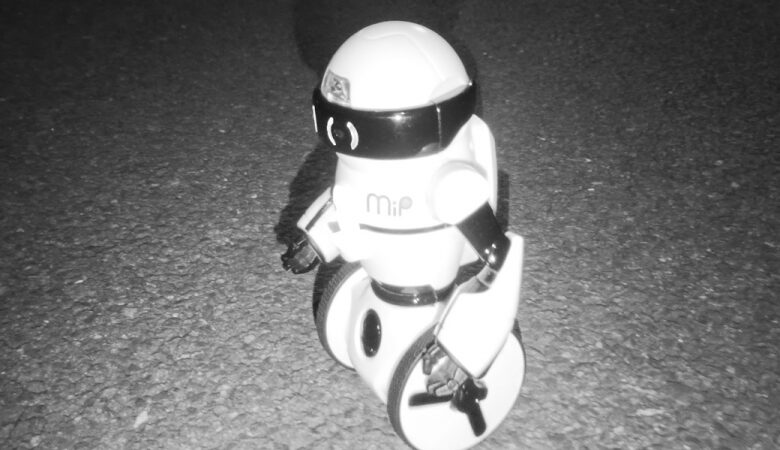Testing The MiP Robot’s Ghost Hunting Capabilities At Delapré Abbey

Delapré Abbey, a neo-classical mansion in Northampton, provided an ideal environment for testing the MiP robot. The vast cellar was isolated from the outside world, which helped to reduce the robot’s false triggering due to external influences. The back room of the cellar had a smooth, flat concrete floor, allowing the robot to move freely. Additionally, the size of the subterranean room ensured enough space for the robot to operate and detect potential paranormal activity.
We placed the MiP robot in the centre of a room at the back of the basement, ensuring the area was free of any obstructions or reflective surfaces that could interfere with the robot’s infrared sensors. We positioned ourselves just outside the door to this room. From here, we could observe the robot but were far enough away to minimise the risk of unintentionally triggering its movements.
As tradition dictates, we began our vigil by turning off our torches, creating a quiet and calm atmosphere to facilitate communication with any spirits that might be present. All that was visible were the glowing blue eyes of MiP in the darkness. We then took turns calling out to the spirits, using a mix of general and specific questions and requests to encourage interaction.
Some of the encouragements called out by the team included:
“If there’s anyone here with us, please move the robot to let us know you’re here.”
“We mean you no harm. Can you please move the robot to show your presence?”
“Is there a child spirit here? If so, please come forward and play with the robot.”
“If you can, please approach the robot and it will move for you.”
“We invite any spirits present to use their energy to move the robot.”
During the first 20 minutes of the vigil, the MiP robot remained mostly stationary, exhibiting only a few small rotations and slight rocking back and forth. We considered these movements insignificant, but continued our efforts to communicate with any spirits in the area.
Around the 30-minute mark, after one investigator asked if there were the spirits of any Civil War soldiers present, the robot suddenly rotated 45 degrees and moved forward approximately 25 cm. This was the first significant movement, so considering it a potential response, we tried to build on it by encouraging the spirit to do the same again.
In the following minutes, we continued calling out, focusing on the possibility of phantom soldiers being present. We encouraged the spirit to interact with the robot and asked if it needed help or had a message to share.
At 45 minutes into the vigil, the robot moved backward around 20 cm after an investigator asked the spirit to “please move the robot away from you if you’d like us to leave.” The team interpreted this movement as a possible sign that the spirit was uncomfortable with their presence or wished to end the interaction.
We ended the vigil just shy of an hour, having only witnessed these two significant incidents of movement. While not definitive, the movements of the MiP robot during the vigil were interesting.
What I like most about the MiP is that it doesn’t trigger often. When a ghost hunting gadget doesn’t trigger all the time, it suggests that the tool is more robust and less prone to false positives. This is important in ghost hunting, as investigators need to be able to trust that the responses they receive are genuine and not simply the result of random environmental factors or technical glitches.
While the MiP robot is a relatively expensive tool, with a price tag of around £80, because it was designed as a toy and not a ghost hunting gadget, it can be picked up cheap secondhand. This makes it more accessible to investigators who are interested in experimenting with new and unconventional methods of detecting paranormal activity.
Although the robot gave us nothing conclusive, the one-hour vigil demonstrated that the MiP is actually a more robust tool than some purpose-built ghost hunting equipment. Its relative resistance to false positives, as well as its ability to detect significant movements, make it a valuable addition to an investigator’s toolkit.
Like all methods of ghost hunting, using the robot requires patience. Investigators must be willing to spend time observing the robot’s movements and interpreting their significance, while also understanding that not every session will yield results. As with any ghost hunting tool, the key is to remain open-minded and persistent in the search for evidence of the paranormal.



